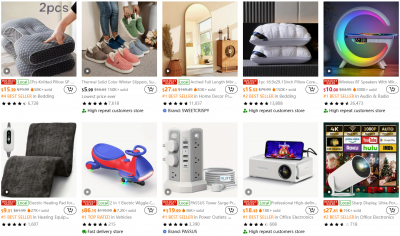The cross-border e-commerce industry continues to thrive, and with each passing year, the stakes and opportunities grow higher. In 2025, selecting and purchasing explosive (bestselling) products remains a cornerstone for businesses looking to dominate their niche markets. This guide outlines the critical steps and considerations for achieving success in this dynamic field.
1. Understand Market Trends

Leverage Data Analytics
In 2025, advanced AI-driven tools allow businesses to analyze market trends with unprecedented precision. Use platforms that aggregate search trends, social media activity, and purchasing data to identify products with growing demand.
Monitor Global Events

Global events like holidays, cultural shifts, and technological advancements can dramatically influence consumer behavior. Stay updated on these factors to predict which products might gain traction.
2. Identify Niche Markets
Research Target Audiences

Focus on specific demographics and their unique needs. Cross-border e-commerce success often hinges on catering to niche markets that mainstream retailers overlook.
Explore Emerging Markets
Consider markets with increasing purchasing power and less competition. For instance, Southeast Asia and parts of Africa are becoming hotspots for e-commerce growth.
3. Evaluate Product Viability
Assess Profit Margins

Ensure that the product has a healthy profit margin after factoring in costs like shipping, customs, and marketing. Tools like landed cost calculators can help.
Test for Scalability
Choose products that can be easily scaled. For example, lightweight and durable items are generally easier to ship internationally.
4. Vet Suppliers Carefully
Prioritize Reliability

Work with suppliers known for consistent quality and on-time delivery. Use platforms like Alibaba, Global Sources, or local sourcing agents to find trustworthy partners.
Build Long-Term Relationships
Establish strong connections with suppliers to secure better pricing, priority service, and exclusive product access.
5. Optimize Your Purchasing Strategy
Bulk Purchasing vs. Dropshipping

Evaluate the pros and cons of bulk purchasing versus dropshipping. Bulk purchasing often offers better margins, while dropshipping reduces upfront investment and risk.
Negotiate Payment Terms
Work on flexible payment terms that align with your cash flow needs. Options like partial payment upfront and balance on delivery can help mitigate financial risks.
6. Stay Compliant with Regulations
Research Import Laws

Understand the import regulations of your target countries, including prohibited items, taxes, and documentation requirements.
Ensure Product Certification
Certain products may require certifications like CE marking in Europe or FDA approval in the U.S. Always verify these requirements before purchasing.
7. Invest in Marketing and Branding
Create a Unique Value Proposition

Differentiate your products through unique branding, packaging, or added services such as extended warranties.
Leverage Social Media and Influencers
Collaborate with influencers and run targeted ads to maximize visibility and consumer interest in your product.
8. Monitor Performance and Adapt
Track Key Metrics

Regularly review sales data, customer feedback, and return rates to evaluate product performance.
Pivot When Necessary
If a product underperforms, don’t hesitate to pivot. Use customer insights to refine your product selection and strategy.
Conclusion
Choosing and purchasing explosive products in cross-border e-commerce in 2025 requires a blend of data-driven decision-making, market awareness, and strategic planning. By understanding trends, vetting suppliers, and staying adaptable, businesses can identify and capitalize on bestselling products, ensuring sustained success in the competitive global market.





Recent Comments